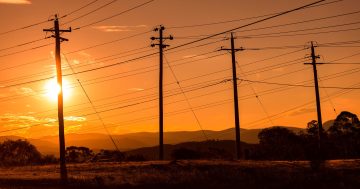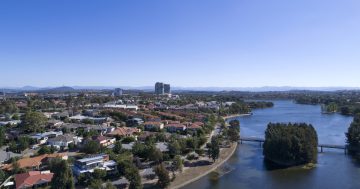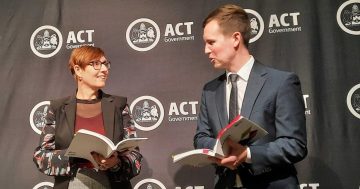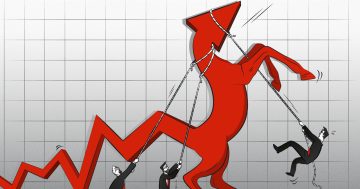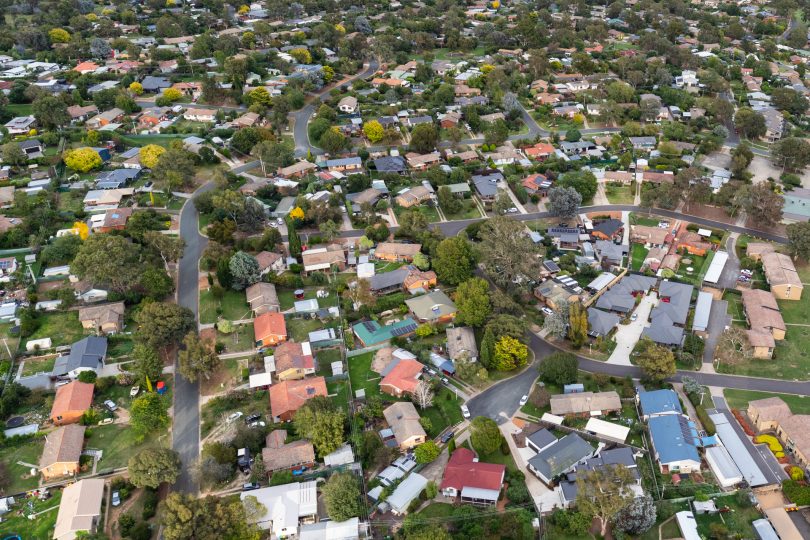
Residential housing has been hit by multiple interest rate rises. Photo: Michelle Kroll.
Interest rate rises have eaten into the value of Canberra homes over the last quarter, with the median house price falling 5.2 per cent.
CoreLogic’s interactive Mapping the Market tool shows weaker selling conditions continued to spread across Canberra, with all 85 suburbs analysed recording a decline in house prices over the September quarter.
In the previous quarter, prices fell in only 26.5 per cent of the suburbs studied.
The median house price is still above the million-dollar mark at $1,009,575, making Canberra the second most expensive capital in the nation.
Just four suburbs have a median house price under $750,000 – Charnwood ($705,323), Phillip ($683,851), Greenway ($650,597) and Belconnen ($623,496).
But CoreLogic’s analysis shows that in more than one in four (27.1%) suburbs, prices fell year-on-year.
Belconnen recorded the largest decline in the quarter, down 10.5 per cent, followed by Denman Prospect and Page (-10%), Garran (-9.1%) and Weetangera (-9%).
The largest 12-month decline was in Torrens, where house prices fell by 6.7 per cent, followed by Aranda and O’Connor (-6.5%) and Hackett (-5.9%).
The most resilient suburbs were Campbell and Bonner where prices fell only 2 per cent, followed by Phillip (-2.3%), Chapman (-2.5%), Dickson (-2.7%) and Fadden (-2.8%).
Units and townhouse prices held up better over the quarter, falling 1.7 per cent over the three months to September, taking the median to $616,027.
Prices fell in 40 of the 47 suburbs analysed, but only one suburb, Macquarie, recorded a year-on-year decline (-2.4%).
The biggest fall was in Calwell (-5.9%), followed by Isabella Plains (-5.6%) and Cook (-5.1%).
Unit prices in Hawker rose 3.1 per cent, followed by Barton (2%), and Griffith and Casey (1.4%)
Of the 47 suburbs, 37 recorded a median price between $500,000 and $750,000, while only five had a median over $750,000 and five had a median below $500,000.
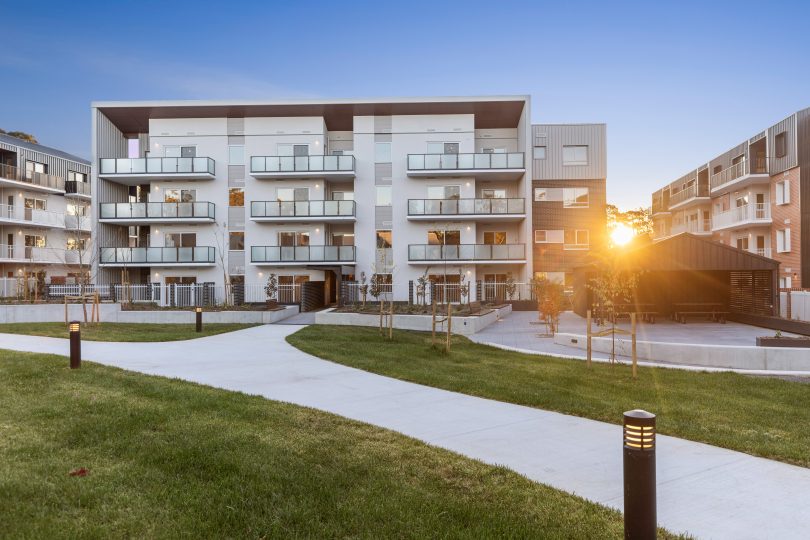
Townhouses and units are less sensitive to interest rate rises. Photo: CHC.
CoreLogic economist Kaytlin Ezzy said that as long as interest rates kept rising home values would keep falling, but it was a matter of by how much.
“I think it’s very unlikely we’ll see a broadscale rise in value while interest rates are still rising,” she said.
“We have seen a slight slowdown in the pace of decline across Canberra … which could indicate that we are going to see values fall at a slightly slower pace as we move throughout the rest of the year.
“That being said, it really comes down to interest rates. If that outlook for interest rates changes, it will have a fairly significant impact on that pace of decline in values.”
Ms Ezzy said the smaller declines in the unit market reflected the fact that it was less sensitive to interest rate rises but also that house prices had grown much more than units – 40 per cent compared with 25 per cent.
Ms Ezzy said blue-ribbon areas of Canberra had recorded the smallest declines over the last quarter as these had been the first to be hit when interest rates began to rise.
“Their values started falling in about January to March, whereas some of those more affordable suburbs are only just starting to see values decline. They’re recording larger initial declines compared to the slowing down of decline seen at that high end,” Ms Ezzy said.
She said Canberra’s strong employment base was still supporting the market.
“It’s definitely helping to put a floor on distressed sales, and we’re not seeing any distressed listings come on the market yet,” Ms Ezzy said.
“In fact, Canberra’s new listings are about 10 per cent below the levels that we’d normally expect for this time of year.”
There was also evidence that vendors were holding off putting their properties on the market until interest rates levelled off.
Ms Ezzy said she did not expect values to fall below the strong growth that occurred over the COVID period.
The spring selling season would help support the market, but values would continue to fall for the rest of the year as interest rates rise.
“Once they stabilised, we would expect values to find their floor and then possibly rise as market conditions improve,” Ms Ezzy said.
Original Article published by Ian Bushnell on Riotact.




